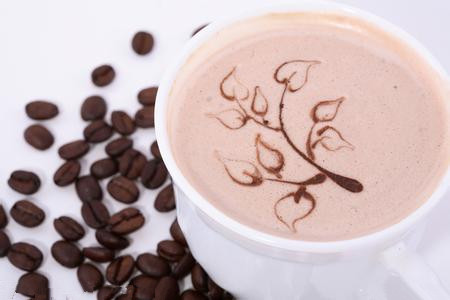Common sense of how to choose fancy Coffee partner for Dairy products
The earliest encounter between coffee and milk dates back to the 17th century. It is said that Turks never drink milk in their coffee because they are generally lactose intolerant. Later, a Venetian named Johamnes Diodato invented this method, and he is also the now famous inventor of praises bread.

At present, there are many dairy products on the market that can be paired with coffee, mainly including the following:
Coffee companion (plant fat powder)
In fact, it is the infamous cream powder, which inevitably produces trans fatty acids in the process of extraction from palm oil, so it is harmful to the human body. By the way, many fresh milk cakes are also made of vegetable fat cream, and its effect is the same as that of cream powder. Now this kind of product has been a little out of control, the cost advantage makes it invincible, the hardest-hit area of cream powder is the milk tea shops all over the street, which is likely to destroy the health of our generation.
In fact, in addition to the high caffeine content, many instant coffee is harmless to the human body, but after adding cream powder, it is other harmful, so it is strongly recommended not to add milk powder.
Cream balls, light milk
Cream balls and light milk are divided into full-fat and vegetable fat, which can be used as a reference coffee companion, and full-fat is the best companion for coffee. Light milk is actually similar to concentrated milk. In terms of milk quality, the best milk source is used to make yogurt, followed by dairy products that need to be purified, such as light milk and whipped cream. And because the concentration of light milk is very high, it will make the coffee more full-bodied, waterless and smoother.
milk
Milk is also the most commonly used and easily available dairy product, but the biggest disadvantage of milk is that the concentration is not enough, so it will dilute the coffee. When we add milk to black coffee, remember to heat the milk to about 65 degrees in advance.
For daily drinks such as coffee, you must choose high-quality and safe raw materials, otherwise it is easy to endanger your health due to long-term accumulation.
Important Notice :
前街咖啡 FrontStreet Coffee has moved to new addredd:
FrontStreet Coffee Address: 315,Donghua East Road,GuangZhou
Tel:020 38364473
- Prev

Italian condensed basic knowledge what is Crema
During the roasting process, a large amount of carbon dioxide is produced in the coffee beans, most of which will be emitted during the cooling process, a few will continue to be kept inside, and the grinding will release these gases, so coffee must be made as soon as possible after grinding. When hot water hits coffee powder under high pressure, it will emulsify the insoluble oil of coffee powder and dissolve a large amount of carbon dioxide supersaturated.
- Next

26 points for attention in siphon pot brewing coffee
1. The next bottle should be dried and there should be no water droplets. When you pull out the upper seat, tilt to the right and pull straight up, do not break 3. The spring under the middle filter should be tightened, the hook should be hooked, and pulled to the center 4. When you plug in the seat, plug it down and hold it tight by 5. Pay attention to water quality: pure water, purified water, magnetized water, distilled water, do not use mineral water 6. The temperature is 80-90 degrees Celsius in this room. Punch time: all 50: 60
Related
- Beginners will see the "Coffee pull flower" guide!
- What is the difference between ice blog purified milk and ordinary milk coffee?
- Why is the Philippines the largest producer of crops in Liberia?
- For coffee extraction, should the fine powder be retained?
- How does extracted espresso fill pressed powder? How much strength does it take to press the powder?
- How to make jasmine cold extract coffee? Is the jasmine + latte good?
- Will this little toy really make the coffee taste better? How does Lily Drip affect coffee extraction?
- Will the action of slapping the filter cup also affect coffee extraction?
- What's the difference between powder-to-water ratio and powder-to-liquid ratio?
- What is the Ethiopian local species? What does it have to do with Heirloom native species?

